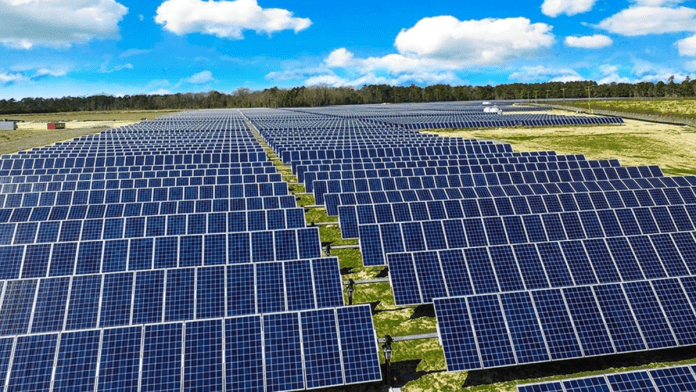🕒 Last updated on November 2, 2025
Solar energy is expanding at record speed as panel prices collapse across global markets. Over the past decade, the cost of solar panels has dropped by almost 90 percent, making solar power one of the cheapest ways to produce electricity. This price fall has sparked a rush to install solar farms and rooftop systems from China to Africa.
China is leading the transformation. The country now manufactures around 80 percent of the world’s solar panels and operates vast solar parks, including those on the Tibetan Plateau where sunlight is especially strong. President Xi Jinping has called the move toward clean energy “the trend of our time.” The International Energy Agency (IEA) reports that global solar capacity already exceeds four times its original 2035 forecast, with roughly half located in China. Analyst Heymi Bahar from the IEA said it has become “very difficult to make any other choice” when solar power is this cheap.
Falling prices are also reshaping the battery market. China’s mass production of energy storage systems has lowered global costs, allowing more countries to store solar energy for use when the sun isn’t shining. Together, these advances have pushed renewable power to record levels around the world.
New Energy Leaders Emerge
In India, solar power is growing rapidly across the deserts of Rajasthan and Gujarat. Companies such as ReNew Power, led by Sumant Sinha, are building huge solar farms to meet national targets. India aims for 500 gigawatts of clean power by 2030 and has already surpassed 240 gigawatts, with more than half of its capacity now renewable. However, coal still provides most of its electricity, and projects face challenges connecting to the grid.
Green energy gets a brain — Infosys’ AI transforms wind and solar into unstoppable power sources
Saudi Arabia is also investing heavily in solar to conserve its oil resources. ACWA Power, headed by Marco Arcelli, is developing about 30 gigawatts of renewable capacity backed by the kingdom’s sovereign wealth fund. By generating solar power locally, Saudi Arabia can export more oil while meeting domestic energy needs.
Across Africa, smaller solar grids are transforming communities. Husk Power Systems, led by William Brent, has built hundreds of “mini-grids” in Nigeria and India, replacing costly diesel generators and powering shops, schools, and clinics. Rooftop solar is also spreading fast as households seek independence from unreliable grids and high prices. BloombergNEF reports that small installations under one megawatt now make up about 42 percent of global capacity, nearly double their share in 2015.
According to think tanks like Ember and the Energy Transitions Commission (ETC), renewable power from solar and wind produced more electricity than coal during the first half of this year. Yet the Energy Institute notes that fossil fuel supply still increased in 2024, showing that renewables are largely meeting new demand rather than replacing older energy sources.
Solar canals in California mark a breakthrough for clean power and water efficiency
The United States Falls Behind
While the world accelerates toward clean energy, the United States is slowing down. Under President Donald Trump, approvals for large renewable projects such as the Esmeralda 7 complex in Nevada have been withdrawn. His administration rolled back key incentives from the Inflation Reduction Act and imposed tariffs on Chinese-made panels, raising costs for developers.
Reagan Farr, chief executive of Silicon Ranch, said shifting rules make it “very difficult to make big capital decisions.” The IEA has cut its U.S. renewables forecast by half, to around 250 gigawatts by 2030. Companies like Ørsted, the world’s largest offshore wind developer, have faced financing problems after policy changes. Ørsted had to raise billions from investors when blocked from selling stakes in key U.S. projects.
Electricity demand in America continues to rise with new data centers and industries, but much of the growth is fueled by gas and nuclear power. The Energy Information Administration says retail electricity prices have already risen about five percent since July. Analysts at Carbon Brief warn the U.S. could emit billions more tonnes of carbon dioxide by 2030 under current policies. As China, India, and others expand cheap solar power, the U.S. risks losing ground in the global clean energy race.

